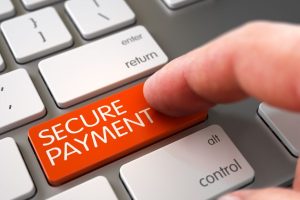1. Introduction
- A. Brief Overview of Mobile Payments
- Explanation: Mobile payments refer to transactions made using a mobile device, such as a smartphone or tablet, to pay for goods or services. With the rise of digital wallets and contactless payment systems, mobile payments have become increasingly popular due to their convenience and speed.

- Explanation: Mobile payments refer to transactions made using a mobile device, such as a smartphone or tablet, to pay for goods or services. With the rise of digital wallets and contactless payment systems, mobile payments have become increasingly popular due to their convenience and speed.
- B. Importance of Transaction Security
- Explanation: As mobile payments grow in popularity, so do the threats associated with them. Mobile payment fraud is a significant concern, with hackers targeting users’ sensitive information. Understanding the importance of securing these transactions is crucial to avoid financial loss and personal data breaches.
- C. Purpose of the Guide
- Explanation: This guide aims to offer practical mobile payment security tips and demonstrate how users can apply them to protect their transactions. It will provide actionable advice to enhance security and mitigate risks associated with mobile payment systems.
2. Understanding Mobile Payment Security Risks
- A. Common Threats and Vulnerabilities
- Explanation: Mobile payments face several risks, including phishing attacks, malware, and data breaches. Phishing can trick users into revealing their payment information, malware can compromise devices, and data breaches can expose sensitive data.
- B. Real-Life Case Studies
- Explanation: Highlighting real-life incidents where mobile payment systems were compromised helps illustrate the seriousness of security threats. For instance, discussing a case where users’ financial data was stolen due to a security lapse can emphasize the need for robust security measures.
3. Essential Mobile Payment Security Tips
- A. Use Strong Authentication Methods
- 1. Importance of Multi-Factor Authentication (MFA)
- Explanation: MFA adds an extra layer of security by requiring more than just a password to access mobile payment accounts. This might include a fingerprint, facial recognition, or a one-time code sent to your phone.
- 2. How to Enable MFA on Popular Mobile Payment Apps
- Explanation: Provide step-by-step instructions for enabling MFA on commonly used apps like Google Pay, Apple Pay, and PayPal, ensuring users can easily apply this security measure.

- Explanation: Provide step-by-step instructions for enabling MFA on commonly used apps like Google Pay, Apple Pay, and PayPal, ensuring users can easily apply this security measure.
- 1. Importance of Multi-Factor Authentication (MFA)
- B. Keep Your Device and Apps Updated
- 1. Why Regular Updates Are Crucial
- Explanation: Updates often include security patches that protect against newly discovered vulnerabilities. Keeping your device and apps updated helps safeguard against exploits and ensures you have the latest security features.
- 2. Steps to Ensure Automatic Updates for Your Device and Apps
- Explanation: Detail how to enable automatic updates on both Android and iOS devices, ensuring users receive critical updates without manual intervention.
- 1. Why Regular Updates Are Crucial
- C. Use Secure Networks
- 1. Risks of Public Wi-Fi
- Explanation: Public Wi-Fi networks are less secure and can be exploited by attackers to intercept data. Using such networks for mobile payments can expose sensitive information.
- 2. Tips for Using Secure and Trusted Networks
- Explanation: Advise users to use secure, private Wi-Fi connections or a VPN when conducting mobile transactions to minimize the risk of data theft.
- 1. Risks of Public Wi-Fi
- D. Monitor Your Transactions Regularly
- 1. Setting Up Alerts for Transactions
- Explanation: Many mobile payment apps allow users to set up alerts for each transaction. This helps quickly detect any unauthorized activity.
- 2. How to Review and Dispute Unauthorized Transactions
- Explanation: Provide guidance on how to review transaction histories within mobile payment apps and steps to dispute any unauthorized transactions promptly.
- 1. Setting Up Alerts for Transactions
- E. Be Cautious with Links and Attachments
- 1. Recognizing Phishing Attempts
- Explanation: Phishing attempts often involve fake emails or messages designed to trick users into providing personal information. Teach users how to recognize and avoid these scams.
- 2. Best Practices for Clicking Links and Opening Attachments
- Explanation: Offer best practices, such as verifying the source of links and attachments before interacting with them, to avoid malware and phishing attacks.

- Explanation: Offer best practices, such as verifying the source of links and attachments before interacting with them, to avoid malware and phishing attacks.
- 1. Recognizing Phishing Attempts
4. How to Apply These Tips in Real Life
- A. Practical Steps for Users
- 1. Setting Up Your Mobile Payment App Securely
- Explanation: Guide users through the initial setup of their mobile payment apps with a focus on security settings, such as enabling MFA and setting strong passwords.
- 2. Regular Security Checks and Maintenance
- Explanation: Encourage users to regularly check their security settings and perform maintenance tasks, such as updating apps and reviewing security policies.
- 1. Setting Up Your Mobile Payment App Securely
- B. Incorporating Security Habits into Daily Use
- 1. Creating Strong Passwords and PINs
- Explanation: Recommend creating complex passwords and PINs for mobile payment apps, and advise on how to manage them securely.
- 2. Educating Yourself About New Threats
- Explanation: Stress the importance of staying informed about new security threats and best practices through reputable sources.
- 1. Creating Strong Passwords and PINs
- C. Tools and Resources for Enhanced Security
- 1. Recommended Security Apps and Tools
- Explanation: Suggest security apps and tools, such as antivirus software and password managers, that can help protect mobile transactions.
- 2. Resources for Ongoing Security Education
- Explanation: Provide links to educational resources and security blogs where users can learn more about mobile payment security and stay updated on new developments.
- 1. Recommended Security Apps and Tools
5. Conclusion
- A. Recap of Key Security Tips
- Explanation: Summarize the essential mobile payment security tips covered in the guide, reinforcing their importance.
- B. Encouragement to Take Action
- Explanation: Motivate readers to implement the tips immediately to enhance their security and protect their financial information.
- C. Call to Action
- Explanation: Encourage users to start applying the security tips today and to remain vigilant about their mobile payment practices.
6. Additional Resources
- A. Links to Further Reading
- Explanation: Offer links to additional articles, guides, and resources related to mobile payment security for users who want to delve deeper into the topic.
- B. Contact Information for Security Support
- Explanation: Provide contact details for customer support or security teams of popular mobile payment apps in case users need assistance or encounter issues.
This detailed explanation ensures that the content for each section is informative, actionable, and relevant, effectively incorporating the keyword “Mobile Payment Security Tips” throughout the guide
